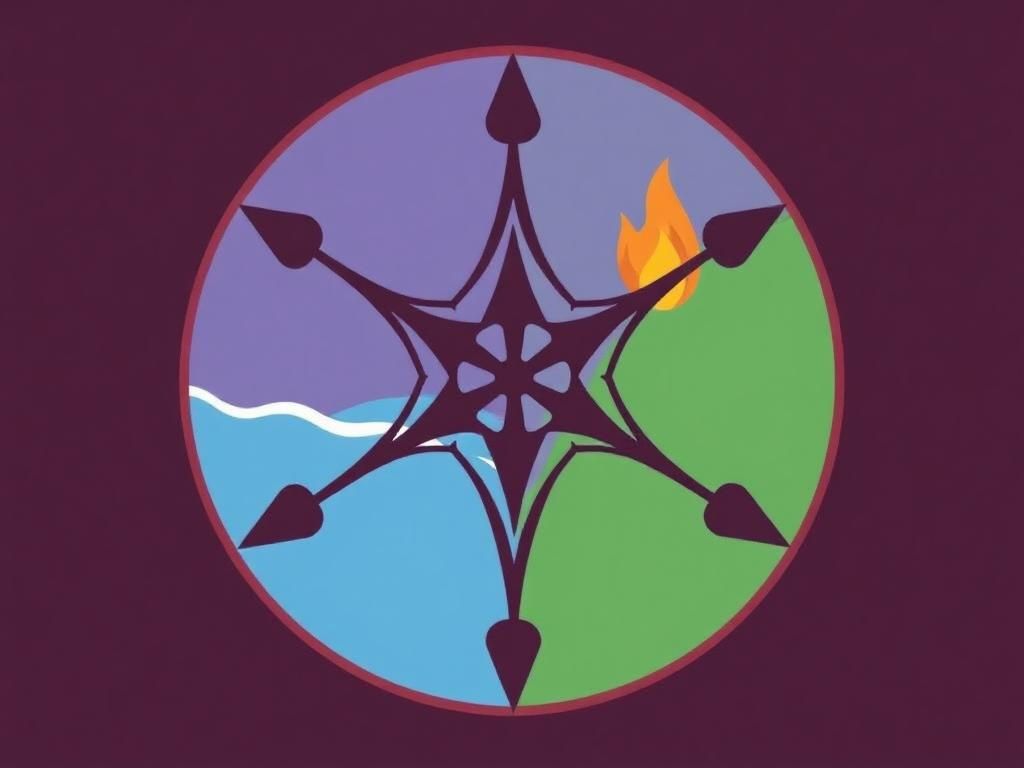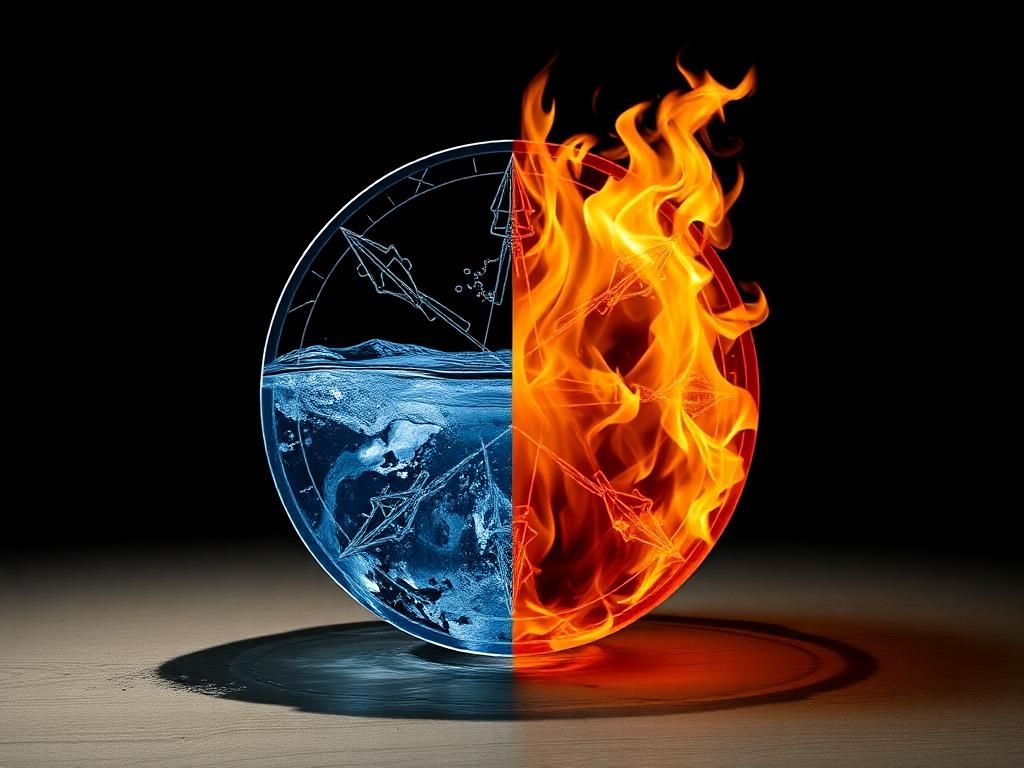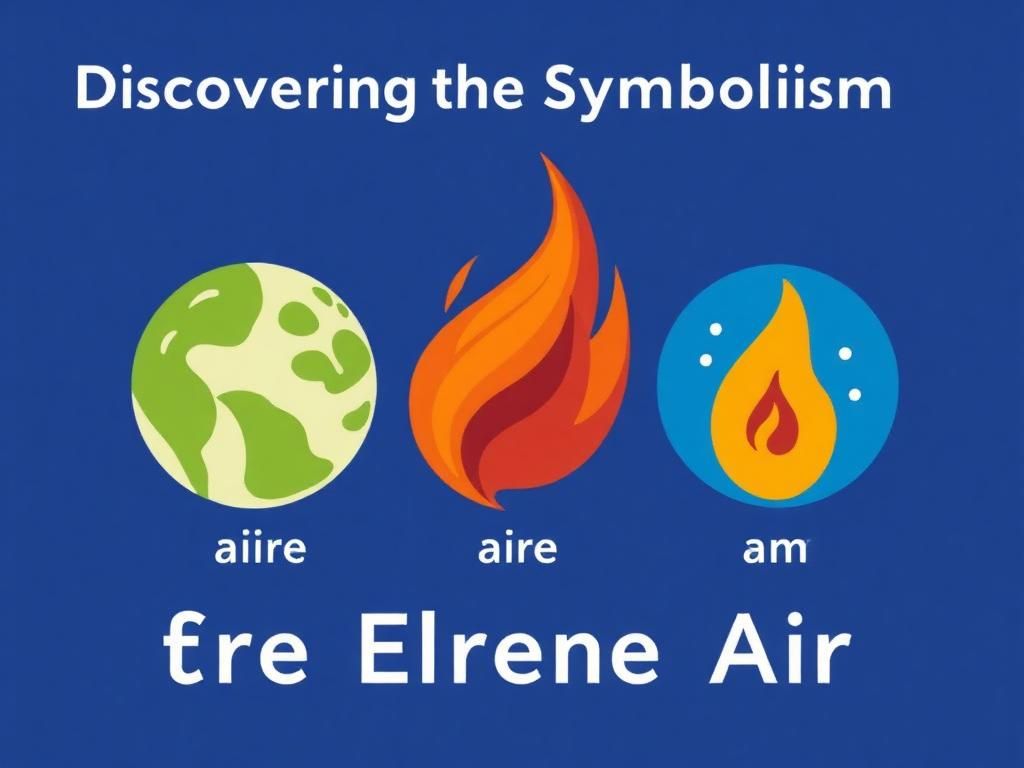The symbolism of the elements resonates across various domains, including science, philosophy, and culture. From classical philosophy to modern interpretations, the four classical elements—earth, water, fire, and air—have been ascribed deeper meanings that reflect human experiences, emotions, and beings’ surroundings. This article explores the profound symbolic significance of these elements, their interrelations, and their implications across different fields.
Historical Context of the Elements
Ancient Philosophical Perspectives
The interplay of the four classical elements has roots in ancient philosophy, notably with figures like Empedocles and Aristotle. Empedocles postulated that all matter is composed of these four elements, suggesting that they play a fundamental role in forming the universe. Aristotle expanded on this with his theory of matter and form, infusing a more structured interpretation of these elements within his metaphysical framework.
In Indian philosophy, the Panchamahabhuta concept illustrates the idea of five great elements—earth, water, fire, air, and space—underscoring their role in cosmology and individual existence. Each element contributes to holistic health, reflecting a balance in nature and the cycles of life.
Similarly, in Chinese philosophy, the Wu Xing (Five Elements) details the interactions between five elemental forces—wood, fire, earth, metal, and water. This system emphasizes transformation and balance, showcasing the dynamics among elements while offering insights into health, fortune, and environmental harmony.
Symbolism across Cultures
Indigenous cultures also contribute to the symbolism of the elements, viewing them as sacred forces essential to life. For instance, many Native American tribes revere earth as their source of sustenance and spiritual grounding. In this context, the elements are not merely physical materials; they represent life forces deeply intertwined with spirituality.
The alchemical traditions of the Middle Ages focused on these four elements, proposing that material transformation reflected spiritual evolution. In alchemy, earth, water, fire, and air became metaphors for various stages of spiritual ascension—encouraging practitioners to seek the alchemical gold within themselves.
The Four Classical Elements
Earth
The symbolism of earth encompasses stability, grounding, fertility, and materiality. In various cultures, earth is associated with nature and the physical world, often represented through mountains, valleys, and the soil that nurtures life. Artists and writers have long utilized earth’s symbolism to convey ideas of permanence and resilience. For example, in literature, earth often symbolizes the foundational aspects of existence, as seen in works that reflect on humanity’s relationship with nature.
The impact of this element extends to cultural and spiritual practices. In paganism and land-based spiritualities, earth represents the feminine divine and connection to the ancestral lands. Additionally, in astrology, earth signs—Taurus, Virgo, and Capricorn—embody traits such as practicality and reliability, further highlighting earth’s steadfast nature.
Water
Often regarded as the essence of life, water symbolizes emotions, intuition, purification, and adaptability. Its representation in religious contexts—with practices like baptism and cleansing rituals—demonstrates its role as a vehicle for spiritual renewal. In literature and art, water often signifies motion, depth, and transformation, depicted as serene rivers or tumultuous seas.
Water also has profound cultural implications; mythological tales feature various water deities, such as the Greek Poseidon or the Hindu Ganga, evoking themes of both nurturing and potential destruction. In astrology, water signs—Cancer, Scorpio, and Pisces—are associated with sensitivity and emotional depth, highlighting the complexities of the human psyche.

Fire
Symbolizing transformation, energy, passion, and destruction, fire holds a dual nature. Its creative power is evident in its ability to forge and illuminate, while its destructive force can devastate. In mythology, stories like that of Prometheus highlight humanity’s relationship with fire, representing enlightenment yet also the risks involved.
Culturally, fire rituals are abundant across various societies, often representing purification and renewal. In astrology, fire signs—Aries, Leo, and Sagittarius—embody traits of enthusiasm, leadership, and courage, demonstrating fire’s passionate and dynamic characteristics.
Air
The symbolism of air encompasses intellect, communication, freedom, and life. Often associated with the breath, air signifies the life force and the spirit. In literature, themes of inspiration and creativity are frequently tied to the notion of air, representing the mind’s capacity for expansion and exploration.
Cultural interpretations of air include the reverence of wind deities, such as the Greek Aeolus or the Native American Wind Spirits, who embody the spirit’s flowing nature. In astrology, air signs—Gemini, Libra, and Aquarius—represent adaptability and sociability, emphasizing communication and intellectual engagement.
Interconnections between the Elements
The Balance of Elements
The symbolism of the elements illustrates how they influence and balance one another. For instance, water nourishes earth, allowing for growth, while fire can change air with its heat, transforming it into different states. This concept of equilibrium signifies the interconnectedness of all four elements, emphasizing that harmony arises when all are present in adequate measures.
The Elements in Astrological Practices
Astrology employs the four elements to categorize the zodiac signs, influencing personality traits and behaviors. Understanding one’s element can reveal personal tendencies—such as the grounded nature of earth signs or the intuitive wisdom of water signs—providing insights into one’s character. The Four Element Theory in astrology is integral for chart analysis and personal exploration.
Mixed Element Symbolism
The symbolism of the elements can also be blended to create hybrid symbols, such as steam, representing a mixture of water and fire. This dual representation signifies transformation and change, allowing for a more complex understanding of elemental interactions. Hybrid symbols play a significant role in modern spirituality and personal development practices, illustrating how elements can merge to form new meanings.
Elemental Symbolism in Modern Contexts
Psychological Interpretations

Exploring the symbolism of the elements through a psychological lens reveals how they relate to personality types. For instance, Jungian psychology sometimes correlates the elements with different archetypes or persona, offering a framework to understand the self. Individuals may engage with elemental symbolism in personal development practices, helping them tap into their inherent qualities.
Elements in Art and Literature
Many artists and writers utilize the symbolism of the elements to convey themes and emotions. Analyzing works by creators like D.H. Lawrence, who explored elemental themes in works such as “Women in Love,” reveal intricate connections between the elements and human expression. Similarly, Van Gogh’s depictions of nature show earth and air in harmonious balance, stirring emotional responses in viewers. These elements profoundly impact modern storytelling, enriching narratives and character development.
Elements in Popular Culture
Contemporary representations of the elements are prevalent in popular culture. Franchises like Avatar: The Last Airbender illustrate elemental powers and their significance within a fictional universe, resonating with themes of balance and personal growth. Music and performance art also utilize elemental symbolism, creating a transformative experience for audiences through metaphors of fire, water, earth, and air.
Table: Key Elements, Symbols, and Their Meanings
| Element | Symbolism | Astrological Signs | Cultural Representation |
|---|---|---|---|
| Earth | Stability, grounding, fertility | Taurus, Virgo, Capricorn | Paganism, land-based spirituality |
| Water | Emotions, intuition, purification | Cancer, Scorpio, Pisces | Water deities, cleansing rituals |
| Fire | Transformation, energy, passion | Aries, Leo, Sagittarius | Fire rituals, mythological tales |
| Air | Intellect, communication, freedom | Gemini, Libra, Aquarius | Wind deities, breath of life |
Frequently Asked Questions
1. What does the symbolism of the elements represent?
The symbolism of the elements represents various human experiences and emotions associated with earth, water, fire, and air. Each element embodies particular traits and meanings that transcend cultural boundaries.
2. How have ancient philosophers viewed the elements?
Ancient philosophers, like Empedocles and Aristotle, regarded the elements as fundamental components of the universe, influencing matter and the natural world.
3. What role do the elements play in astrology?
The elements categorize zodiac signs and influence personality traits, providing a framework for understanding self and relationships.
4. How can I apply elemental symbolism to my life?
Engaging with elemental symbolism can enhance self-awareness, helping individuals discover their inherent traits and cultivate balance.
5. What cultural significance do the elements have?
Elements are revered in various cultures, symbolizing sacred connections to nature, spirituality, and human experiences.
6. Can the symbolism of the elements change over time?
Yes, the symbolism of the elements can evolve as cultures adapt and new interpretations emerge, reflecting contemporary values and beliefs.
7. Are there any modern practices related to elemental symbolism?
Yes, many personal development practices utilize elemental symbolism, allowing individuals to harness the energies and qualities associated with each element.
8. What are some examples of elements in art?
Many artists incorporate elements into their works to convey themes of nature, emotion, and transformation, as seen in the works of Van Gogh and D.H. Lawrence.
9. How do the elements interplay with one another?
The elements influence each other in a dynamic way; for instance, water can nourish earth, while fire may create new air currents, symbolizing transformation and resilience.
10. What is the significance of hybrid elements?
Hybrid elements, like steam, represent the merging of qualities, showcasing how elements can cooperate to convey complex notions and spiritual truths.
